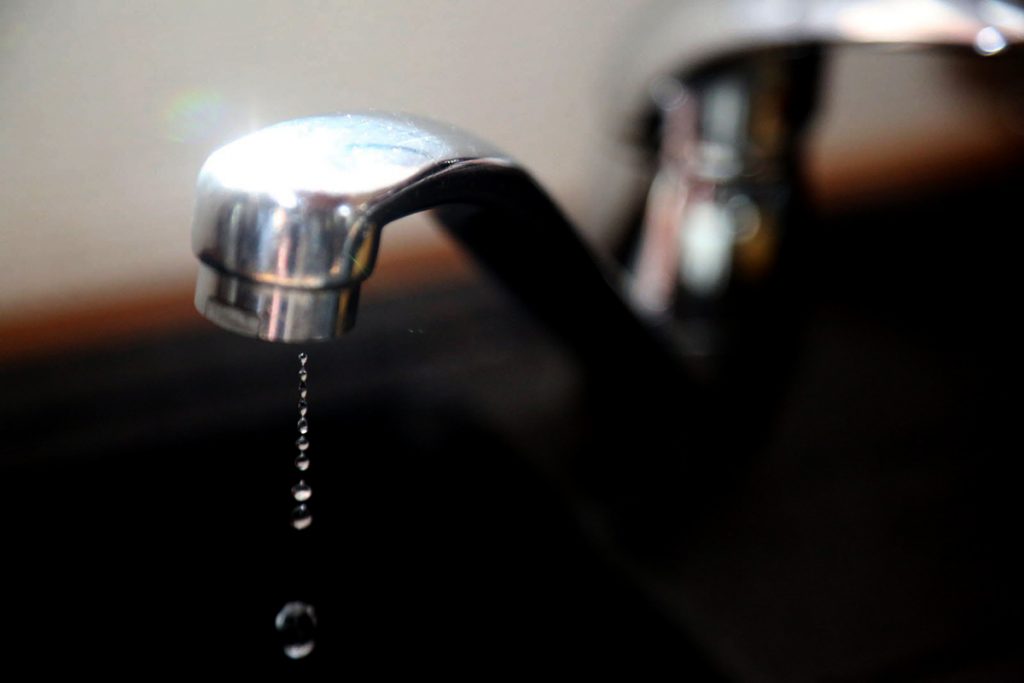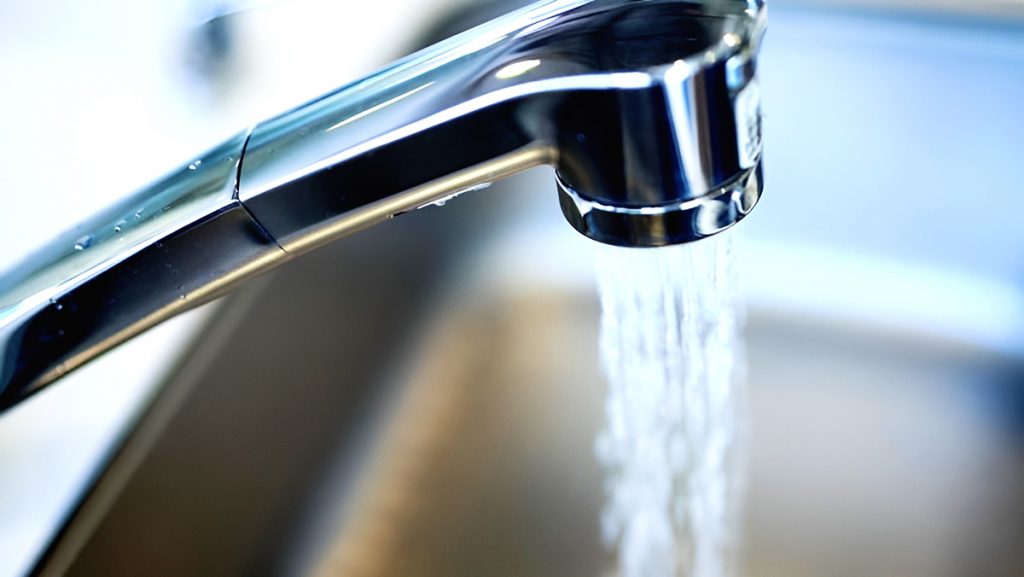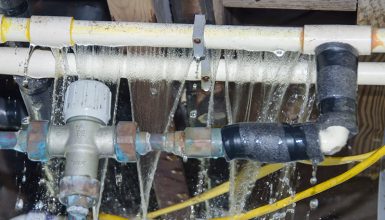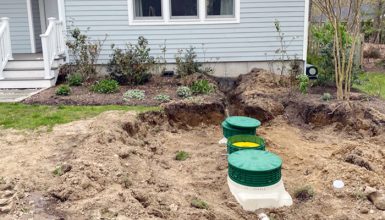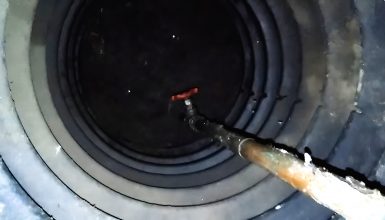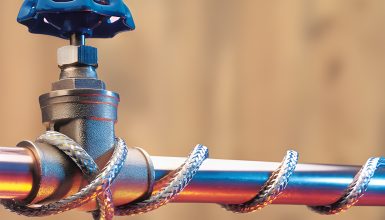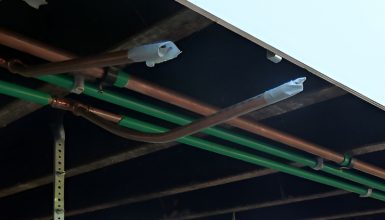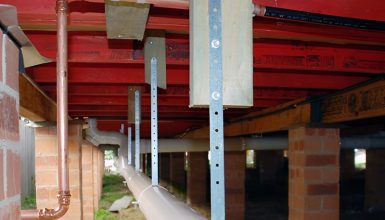When it comes to your mobile home, water pressure is all about how hard your water pushes against the pipes. The driving force gets the water from the supply line to your faucet. The stronger this force, the quicker you can fill your tub, and the better your shower feels.
You might wonder, “What’s a good water pressure level?” Ideally, you’re looking at around 40 to 60 pounds per square inch, often abbreviated to psi. Picture your favorite quarterback throwing a 40-psi pass – that’s the sort of ‘oomph’ we’re talking about!
But here’s the thing. Too low, and you’re dealing with trickles instead of flow. Too high, and you risk damaging your pipes. It’s like Goldilocks’ porridge – it needs to be just right.
Now, why is this so important? Low water pressure can turn everyday tasks into a drag. Nobody wants to spend an eternity washing dishes, right? It could also be a sign of more significant issues, like leaks or blocked pipes, which could lead to expensive repairs.
Troubleshooting Low Water Pressure in Your Mobile Home
So, you’ve noticed your water pressure is acting more like a hesitant dribble than a mighty river. Well, several culprits could be behind this frustrating dilemma. Let’s investigate and fix the most common causes of low water pressure and fix them.
1. Plumbing Leaks
First off, we have the notorious plumbing leaks. Just like a garden hose, if your water is escaping through a leak, there will be less of it making its way to your faucets. Leaks can sometimes be sneaky, hiding out of sight, but they’re one of the main reasons your water pressure might be lower than a snake’s belly in a wagon rut.
Sings
You might not see a mini-Niagara Falls under your sink, but don’t let that fool you. Look for signs like damp spots on your walls or floors, mold growth, or an unusually high water bill. If your water meter keeps running even when you’re not using water, there’s likely a leak.
How to fix
If you’ve discovered a minor leak, you can fix it yourself with some plumber’s tape or a patch kit from your local hardware store. But remember, if it’s a significant leak or hard to reach, it’s best to call in a professional. No shame in asking for help when you need it!
2. Clogged Pipes
Next on our list are clogged pipes. Over time, minerals from the water can build up inside your lines like barnacles on a ship’s hull. This buildup narrows the passage, meaning less water can get through, and voilà, you’ve got low water pressure.
Sings
It could be a sign of a clog if you notice the low pressure is only in certain areas, like the kitchen sink or the upstairs bathroom. An isolated problem often points to a localized clog. On the other hand, if the entire house is affected, the clog might be where the water main enters your home.
How to fix
For clogged pipes, there are a couple of solutions. A simple first step is using a plunger or a plumber’s snake to dislodge the clog. If that doesn’t work, a dose of a commercial drain cleaner might do the trick. But again, if the clog is stubborn, it’s time to dial a plumber.
3. Pressure Regulators
Then we have the pressure regulators. Think of these as the bouncers of your plumbing system. They keep the water pressure from getting too high. But, if they’re faulty or set too low, they can curb the pressure more than necessary. The result? A less-than-satisfying trickle from your faucets.
Sings
A sudden drop in water pressure throughout your home, hot or cold, can be a telltale sign. You’ll need a water pressure gauge to test if it’s the regulator. Attach it to an outside water spigot and turn the water on. If the reading is under 30 psi or over 80 psi, it’s likely the regulator causing the low pressure.
How to fix
Pressure regulators can be a bit tricky. If it’s faulty, you’ll need to replace it, which is a job for a plumbing pro. If it’s too low, you can adjust it using a wrench and screwdriver. Remember to adjust in small increments and recheck the pressure each time with your trusty water pressure gauge.
4. Water Valve
Our fourth suspect is water valve issues. These little guys control the flow of water into your home. If they’re not fully open, it’s like trying to push a watermelon through a straw – the pressure is bound to be low.
Sings
Water valve issues are easier to spot. There are usually two main valves controlling the water into your home: the customer valve near your water meter, and the home valve, which is typically under your kitchen sink or where the water line enters your home. Ensure these are fully open; they’re doing no good half asleep!
How to fix
For water valves, the fix is straightforward. Just turn the valves counterclockwise to ensure they’re fully open. It’s a quick fix, but it can affect your water pressure.
5. Sediment
Last but not least, we have sediment buildup in the water heater. Over time, particles in your water can settle at the bottom of your heater. It can lead to blockages that reduce the amount of hot water coming through your pipes.
Sings
Suppose you only have low water pressure when you’re using hot water. In that case, it’s a good sign of sediment buildup in your water heater. This sediment can reduce your heater’s hot water, leading to low pressure when you need it most.
How to fix
You can flush it out by attaching a garden hose to the drain valve at the bottom of the tank. Just make sure you turn off the power and water supply first! Once the tank is empty, briefly turn the water back on to flush out any remaining sediment. It might be time to consider a replacement if it’s too far gone.
Remember, water pressure issues aren’t always a straightforward fix. It’s like solving a mystery – it could be one issue or a combo deal. The key is to keep a keen eye and start investigating.
Preventing Future Water Pressure Issues
So, you’ve tackled your water pressure issues like a champ. High five! But wouldn’t it be great to prevent them from coming back? Absolutely! So, let’s dive into some tips and tricks to keep your water pressure in the sweet spot.
- Regular maintenance
Firstly, let’s talk about regular maintenance. It’s like going to the gym for your pipes – some preventative care can save you a lot of hassle later on. Keep an eye out for leaks, especially in hidden spots. And don’t forget to clean out those drains regularly. Little steps like these can help nip issues in the bud.
- Pressure regulators setting
Now, let’s talk about pressure regulators. Keeping these bad boys in tip-top shape is crucial. You might want to check their setting using your water pressure gauge occasionally. Remember, you aim for that sweet spot of 40 to 60 psi.
- Valves
Ensure the valves are always fully open unless you’re working on your pipes. A partially closed valve can sneakily cause low water pressure.
- Water heater flushing
And lastly, your water heater needs some love, too. Regularly flushing it out can prevent sediment from building up. It’s not the most glamorous job, but it can save you from a big headache (and a cold shower) in the future.
Conclusion
By now, you’ve become quite the detective, hunting down leaks, clogs, and faulty regulators. You’ve got your toolkit in one hand and the knowledge to keep that water pressure just right in the other. But remember, it’s not all about troubleshooting. It’s also about taking steps to prevent these issues from happening in the first place. There is minor maintenance here, a check-up there, and you’re on your way to hassle-free water flow.

